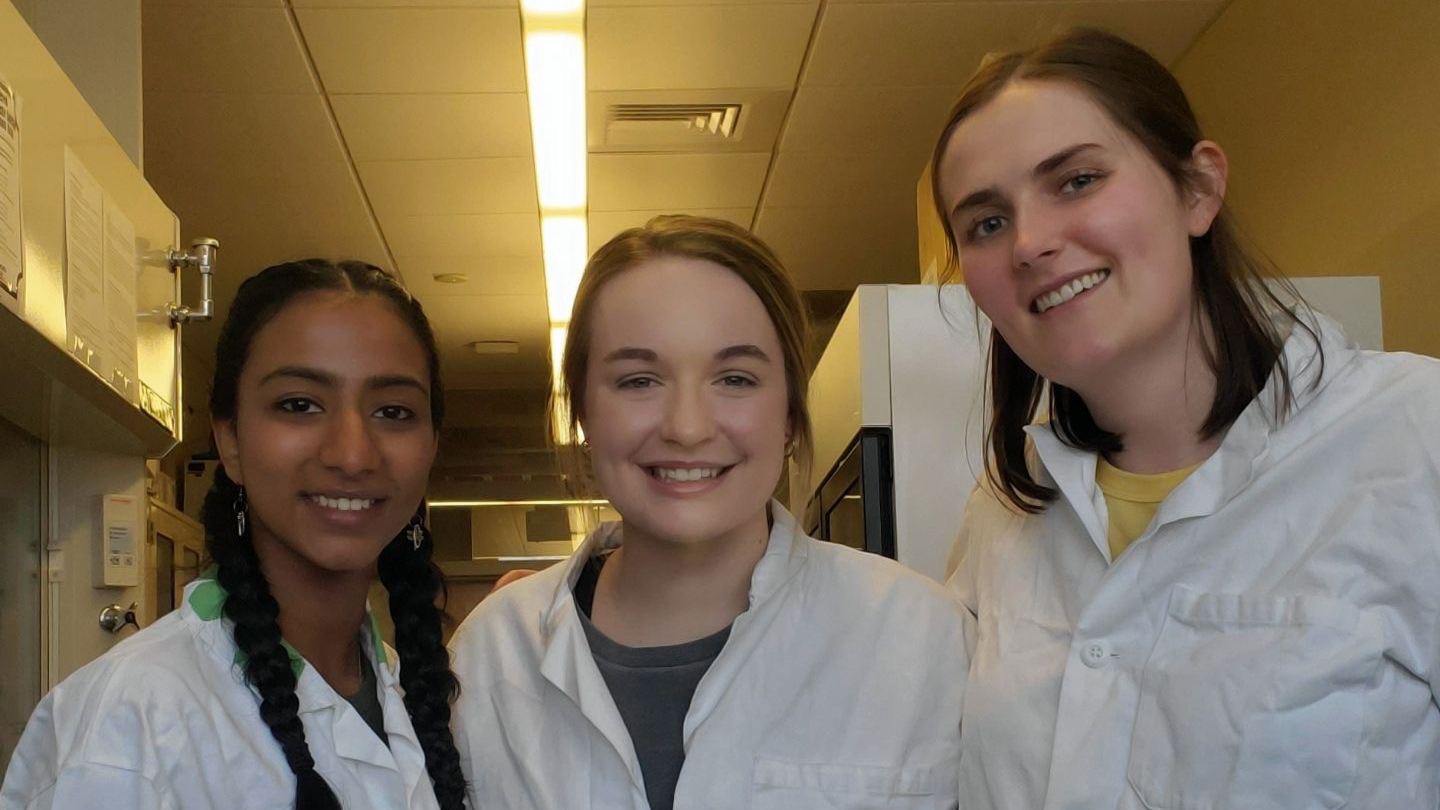
Chemical and biological engineering students Ananya Vajapayajula, Julia Friederich and Lauren Beatty, will present their senior design project, a novel material for detecting viruses in wastewater, during E-Days this Friday, April 22.
Since early in the COVID-19 pandemic, Colorado State University and the state of Colorado have partnered on a wastewater testing program that detects community-level spikes in the viral particles shed in feces. The system has provided critical early-warning data to university and community leadership of potential outbreaks, helping keep campus and the surrounding community open.
Though the system has proven its efficacy, pulling viral signals from wastewater has inherent challenges, from the volume of liquid needed to detect enough signal, to the labor intensity of extracting wastewater samples several times a week. Scientists and engineers across campus have been collaborating on various aspects of improving the state of the art of wastewater sampling, including one senior design team from the Department of Chemical and Biological Engineering.
The team will present the results of their project, which involves a novel material for packing in wastewater filtration devices, to the campus community this week at the Engineering Days senior design showcase.
Undergraduate researchers Lauren Beatty, Ananya Vajapayajula and Julia Friederich, working with their adviser, Associate Professor Chris Snow, have been testing a porous protein material that can be decorated with binding domains for virus particles, including SARS-CoV-2. Ultimately, these protein crystals would catch and retain specific virus particles inside a filtration device cartridge, which would later be read in a lab.
The goal of the project is to increase the signal-to-sample ratio needed to detect a viral signal from a wastewater sample, increasing the efficiency of the extraction process by reducing the volume of wastewater per sample.
“The technique would be easy to use, and could be applied to different viruses,” said Beatty, who is the team lead. We are “verifying that it’s possible to install a COVID binding domain into the crystals. … If you pack them into a semi-permeable membrane, you can create a filtration device that would collect and concentrate viral particles.”
Over the course of the semester, the team has been engineering specific sites in the crystal to facilitate installation of the binding domains.
The students’ work would entail a major change in how wastewater sampling is done, replacing liters of unsanitary wastewater with a cartridge that would be able to detect even small amounts of the virus.

The work builds on foundational protein engineering of porous protein crystals led by Snow. Snow’s team has refined the use of an isoprenoid binding protein from Camplyobacter jejuni bacteria that self-assemble into crystals and feature a highly precise array of nanopores. These crystals can be grown to a diameter of several hundred nanomaters, up to hundreds of microns (about the width of a hair). The porous proteins act as scaffolds for various “guest” proteins, including virus-binding domains, which attach to the insides of the pores and remain stable in many different environments and solutions.
The Snow Lab explores a wide variety of applications for engineered protein crystals, from loading them with DNA to mark mosquitos for West Nile Virus tracking, to making therapeutic tools for delivering RNA inside a human or animal body.
The senior design team’s work is part of a larger overall effort among several departments to continue improving the wastewater sampling program across campus. For example, engineers at the Energy Institute are working on automating the process with pumps and filters, reducing the need for human contact with the waste material. CSU’s wastewater testing program is led by Associate Professor Susan De Long in the Department of Civil and Environmental Engineering, and Professor Carol Wilusz in the Department of Microbiology, Immunology and Pathology.